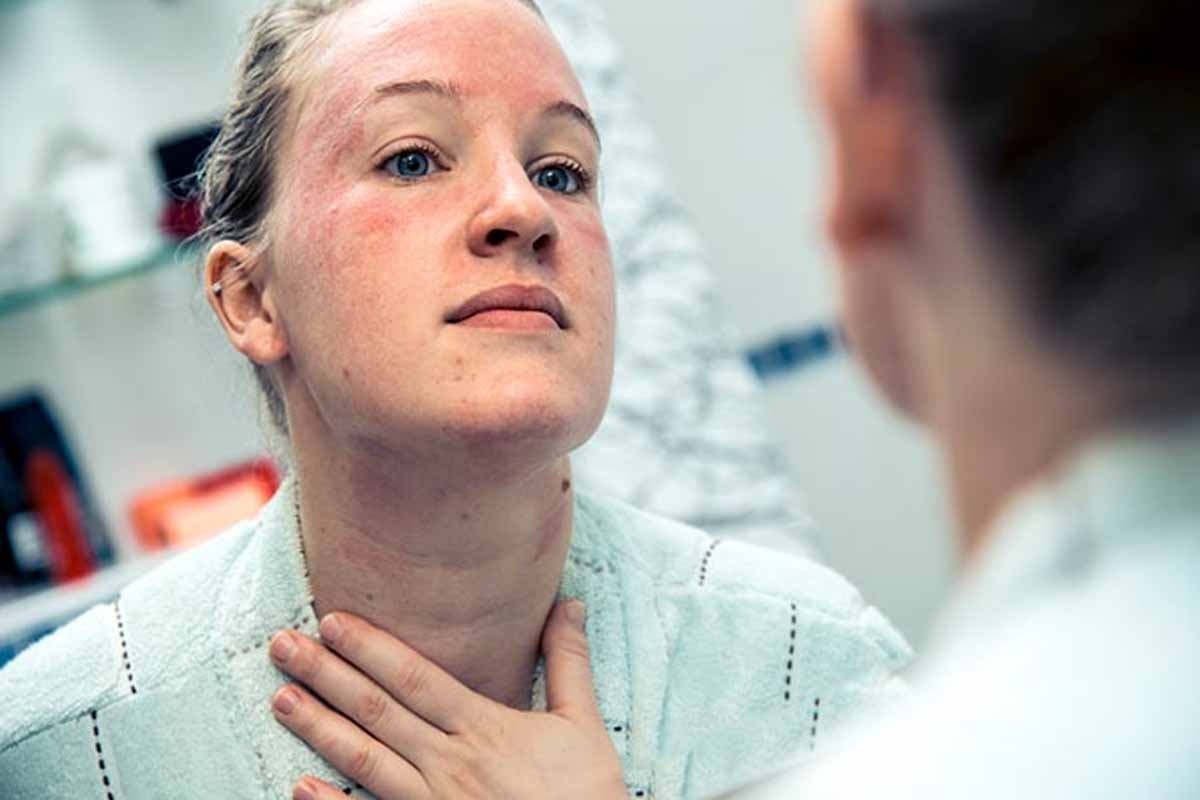Mandaviya underlines importance of preventive healthcare
Union Labour Minister Mansukh Mandaviya on Thursday emphasized the importance of preventive and promotive healthcare in building a healthy and fit India.
Sallow skin is typically more visible in the face but may be present elsewhere on the body. It lacks the bright sheen of healthy skin and is often dull and pale in contrast.

Shallow skin (photo-stock)
The health of your skin is a reflection of your overall health. If your skin appears dull and yellow-tinged, it’s a clear indication of sallow skin. Lifestyle, environmental, and even medical factors are responsible for making your skin look dull and lifeless.
While sallow skin is typically more visible on the face, it can appear on any other part of the body. Lately, if you have noticed that your skin lacks brightness, appears pale and dull, you may be experiencing sallow skin.
Advertisement
How to Recognize Sallow Skin
Advertisement
Sallow skin is typically more visible in the face but may be present elsewhere on the body. It lacks the bright sheen of healthy skin and is often dull and pale in contrast.
This pallor may be uniform or patchy, resulting in an uneven skin tone. This increases the visibility of blemishes and any other skin imperfections that are present.
Sallow Skin Causes
Causes of sallow skin range from medical issues, such as anemia and vitamin deficiency, to lifestyle and environmental factors including smoking, lack of sleep, and chronic stress.
Lifestyle and environmental causes
Controllable external factors, such as unhealthy habits and improper skin care, can result in the skin not receiving sufficient nutrition and hydration. Small lifestyle changes can often be enough to improve a sallow complexion.
Harmful environmental conditions can also contribute to sallowness. While these factors can be more difficult to avoid, precautions can be taken to minimize their impact.
Smoking
The nicotine absorbed through smoking cigarettes causes blood vessels in the skin to constrict, impairing blood flow. This hinders the flow of oxygen and nutrients, preventing them from reaching the skin, and results in a complexion that appears tired, dull, and sallow.
Chronic dehydration
A lack of hydration can impair the functioning of organs, and the skin is no exception. When dehydrated, skin can appear sallow and dry. Most experts agree that adults should consume about 8–9 glasses of water per day to avoid dehydration. Hydrated skin appears plump and exhibits a healthy color.
Fluids that contain caffeine and alcohol are well known for their skin-drying properties and should be consumed in moderation.
Lack of sleep
The occasional restless night won’t cause sallow skin, but a consistently irregular sleep schedule will impact the skin’s appearance and contribute to sallowness. Good sleep hygiene means getting 7–9 hours of sleep per night regularly to maintain healthy skin.
During sleep, the body releases hormones that encourage the growth of new skin cells. When this process is disrupted, wounds healing and collagen production begin to slow. These factors can lead to a sallow appearance.
The body also balances out its hydration levels during sleep; when deprived of this opportunity due to a lack of sleep, skin can become dry and sallow.
Chronic stress
Psychological stress is taxing mentally, but it can also have adverse physical effects and damage the skin. Prolonged periods of stress increase the production of the hormone cortisol, which increases blood sugar, suppresses the immune system and speeds up metabolism. This hurts the body, the results of which can be manifested as sallow skin.
Additionally, long-term psychological stress can hurt your brain–skin connection, disrupting neurological pathways to your skin cells and exacerbating skin aging.
How to treat sallow skin:
Preventing sallow skin requires a combination of eliminating harmful habits and replacing them with good habits. These lifestyle changes are time-tested and are beneficial for both sallow skin and overall health.
Improve your diet
Sallow skin resulting from anemia or vitamin deficiencies can be effectively treated by improving your diet. Leafy greens, lean meats and, fortified cereals are all sources of iron and can help reduce or eliminate anemia, while dairy products, fatty fish, and colorful fruits elevate vitamin levels.
Vitamin supplements can also ensure your skin is receiving vital nutrients, especially if you have any deficiencies; vitamins A, B12, C, D, or E can all help reduce sallowness.
Get enough sleep
Maintain consistent sleep cycles by going to bed at the same time every night and aiming for a minimum of seven hours of rest. Avoid digital screens before bedtime, as they tend to increase wakefulness and inhibit the release of melatonin, your body’s natural sleep hormone.
Manage stress
Allocating time to relax or engage in leisure activities will effectively reduce stress levels. Strategies for stress management include daily exercise, spending time with friends and, practicing mindful meditation.
Advertisement